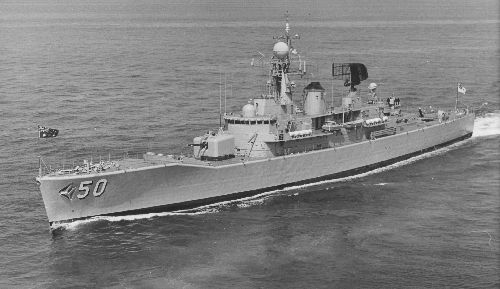- Author
- Smith, John, Cmdr, RAN (RTD)
- Subjects
- Ship design and development
- Tags
-
- RAN Ships
- HMAS Derwent, HMAS Swan II, HMAS Parramatta III, HMAS Torrens II, HMAS Stuart III, HMAS Yarra III
- Publication
- June 2008 edition of the Naval Historical Review (all rights reserved)
It is important to realise that, at this stage, the Royal Australian Navy was still wedded to the Royal Navy with respect to equipment and personnel aspects such as training. The only variation from this practice had been the purchase of the Dutch LW02 radar for, initially, HMAS Melbourne and the River Class Frigates. I wonder who was the brave and persistent soul who convinced us to buy foreign equipment!
We had great difficulty in finding a gunnery control system which would fit into Swan and Torrens. The United States Navy systems with the performance we required were just too large.

Fortunately, the Dutch had equipment available, namely the M22 gunnery fire control system and the M44 radar controlled Seacat control system, which were made by the manufacturer of the LW02 radar, SIGNAALAPPARATEN.
The M22 had the following paper advantages over the MRS3 Mod 3:
- a) It was about 25% of the overall weight
- b) It required about one third of the tween-deck space
- c) It required less than half the crew
- d) The operating console could be positioned in the Operations Room
- e) As it had its own search radar, there was no need for the 293 radar fitted in the other four frigates.
There were other reasons for the choice of M22/M44, but probably the most relevant was that it was available.
Other changes were made in the design of Swan and Torrens and the Naval Constructors took the opportunity to tidy up many of the visual aspects of the vessels. This is particularly apparent from the accompanying photographs.
I have tried in this article to explain some of the reasons why Swan and Torrens were so different to their four predecessors and how we managed to overcome the Government’s approval statement that they were to be the same as those predecessors.
As I did not ever serve in Swan or Torrens, I do not know if they were a more effective operational unit than the other four. I am sure that the Editor would welcome a contribution on this aspect.




